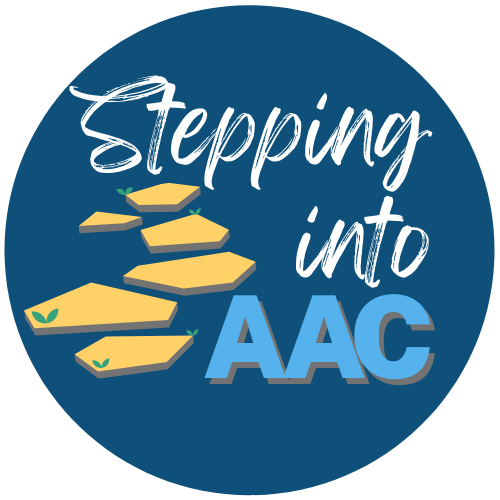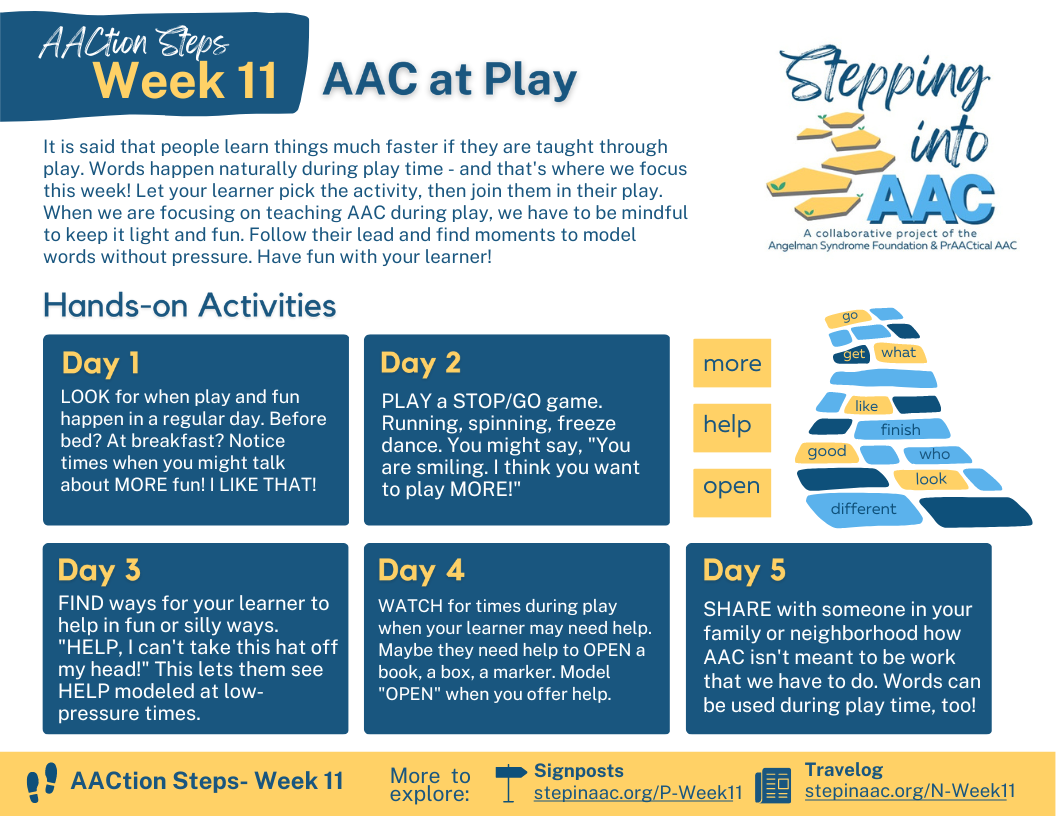
About This Week
Welcome to Week 11 of your Stepping into AAC journey! We continue to put AAC into practice this week and discuss some additional ways to support beginning users of AAC.
You will explore the following concepts this week:
- AAC & Authenticity: Authentic interactions are a key ingredient in teaching someone to use AAC more effectively. Explore some specific strategies that promote these sorts of interactions.
- Language Input: How we talk to new AAC users has a direct bearing on their ability to express themselves using communication aids.
- Building Self-Advocacy: Learn some concrete ways to help beginning AAC users develop the ability to advocate for themselves.
- Language Walk-through – Playing with Building Toys: Join us as we apply some of the AAC concepts we’ve covered so far to a real-life activity: interactive play with building toys, such as blocks, Legos, and magnetic tiles.

AACtion Steps

Week 11 AACtion Steps

Signposts
Building Authentic Interaction with AAC
Questions play a crucial role in language and cognitive development, supporting learning and engagement. Modeling authentic questions and demonstrating curiosity are effective teaching methods. Asking questions aloud, expressing wonder, and problem-solving together create opportunities for exploration and learning.
Get the Handout
Model Self-Advocacy – NO and DIFFERENT
Teaching self-advocacy is important for AAC Learners to cultivate self-determination and active participation in decision-making processes. Honoring and validating their choices and needs is crucial. Using words like “no,” “not,” “stop,” and “different” empowers AAC Learners to express their preferences and refuse unwanted activities. Offering choices and explaining limited options fosters self-advocacy. Modeling self-advocacy through AAC in everyday interactions and media enhances autonomy and decision-making skills.
Get the Handout
Model Self-Advocacy – “Help” and Emotions
Teaching self-advocacy is crucial for AAC learners to develop self-determination and active participation in decision-making processes. Self-advocacy can start at any age, and everyday activities provide opportunities to empower AAC learners when we model “help” and identify and express emotions in our world.
Language Walk-Through – Building Toys
A language walkthrough involves being intentional about thinking through and anticipating language opportunities for a task. It is important to consider the beginning, middle, and end of the task, as well as opportunities for requesting, commenting, describing, and sharing information. This video focuses on using AAC during hands-on leisure activities, specifically playing with building toys such as blocks, Legos, or Magnatiles.

Travelog

Week 11 Travelog
Print the Week
Want all of the resources shared in this week’s Stepping into AAC? You can download the entire digital bundle by clicking the download button below.
